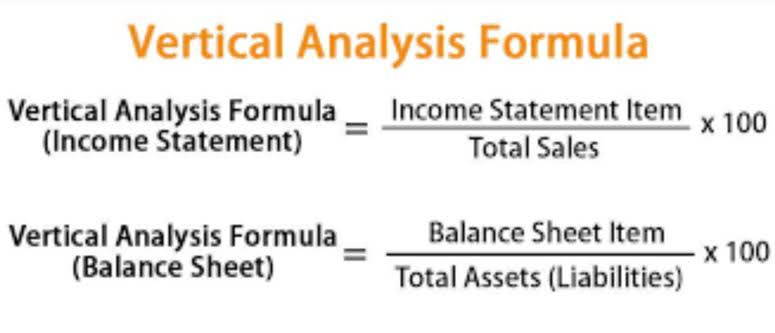
When all of the units in goods available are sold, the total cost of goods sold is the same, using any inventory valuation method. Using FIFO and LIFO calculators simplifies this process by automating calculations based on your chosen inventory valuation method. With these tools, you effortlessly track inventory turnover and maintain effective control over stock levels. The calculators assist in tracking which items leave the warehouse first, aligning with how you’ve added products to your inventory. Embracing these tools empowers you to maintain an accurate balance sheet and manage the cost of goods sold more effectively.
FIFO and LIFO Calculator
However, companies like car dealerships or gas/oil companies may try to sell items marked with the highest cost to reduce their taxable income. Although the ABC Company example above is fairly straightforward, the subject of inventory and whether to use LIFO, FIFO, or average cost can be complex. Knowing how to manage inventory is a critical tool for companies, small or large; as well as a major success factor for any business that holds inventory. Managing inventory can help a company control and forecast its earnings. Conversely, not knowing how to use inventory to its advantage, can prevent a company from operating efficiently. For investors, inventory can be one of the most important items to analyze because it can provide insight into what’s happening with a company’s core business.
How to calculate FIFO and LIFO?
Where ‘n’ is the number of inventory batches used to fulfill the sale. However, it’s important to note that the use of LIFO is restricted in some countries and under certain accounting standards. The selection of a method depends on https://www.bookstime.com/ various factors, including regulatory requirements, industry norms, and the specific circumstances of the business.
How to calculate ending inventory: an example

Economic Order Quantity Calculator – this tool will help you find out the best viable number of items you need to order to maintain sales most cost-effectively. Car parts, especially those with limited shelf lives like rubber or certain composites, are better managed using FIFO. It ensures that older components are used in production first, guaranteeing the quality of the final product. The FIFO calculator used in this industry can help streamline production costs and manage inventory effectively.


Additionally, we’ll explore https://x.com/BooksTimeInc how Sourcetable lets you calculate FIFO, LIFO, and more using its AI-powered spreadsheet assistant, which you can try at app.sourcetable.com/signup. When all components of a finished product can be tracked throughout their time inventory, this method can be used. However, if all items can’t be individually tracked, then FIFO, LIFO or average cost would work best.
- When you sell the newer, more expensive items first, the financial impact is different, which you can see in our calculations of FIFO & LIFO later in this post.
- The NOI calculator ( Net Operating Income) helps you calculate the net operating income, total annual income, and total operating expenses.
- Register for an Easyship account today and you will gain access to the cheapest rates, instantly.
- FIFO and LIFO are helpful tools for calculating the value of your business’s inventory and Cost of Goods Sold.
- Explore the powerful features that 100K+ merchants use to ship smarter, not harder.
- For the 200 loaves sold on Wednesday, the same bakery would assign $1.25 per loaf to COGS, while the remaining $1 loaves would be used to calculate the value of inventory at the end of the period.
The average cost method takes the weighted average of all units available for sale during the accounting period and then uses that average cost to determine the value of COGS and ending inventory. In our bakery example, the average cost for inventory would be $1.125 per unit, calculated as (200 x $1) + (200 x $1.25)/400. In LIFO, it uses the latest inventory to be sold which gives the higher cost of inventory. These costs are higher than the firstly produced and acquired inventory. Higher costs may result in lower taxes with LIFO but it also shows the difference between the two LIFO and FIFO that FIFO represents accurate profits as the older inventory tells actual cost.

If you want to have an accurate figure about your inventory then FIFO is the better method. For tax reasons, FIFO assumes that lifo and fifo calculator assets with the oldest costs are included in the cost of the goods sold in the income statement (COGS). The remaining inventory assets match the assets most recently purchased or manufactured. FIFO facilitates more straightforward tracking of gross profit over time by matching sales more closely with the cost of older inventory. This method simplifies analysis and forecasting in financial operations, particularly useful for industries with stable or predictable costs.
- Considering that deflation is the item’s price decrease through time, you will see a smaller COGS with the LIFO method.
- Last In First Out, or LIFO is particularly useful if you want to decrease the amount of taxed income.
- The lifo fifo calculator estimates the remaining value of inventory and cost of goods sold(COGS) by using the FIFO and LIFO method.
- This is used for cost flow assumption purposes, the method in which costs are removed from a business’s inventory and reported as the cost of sold products.
- For you as an inventory manager, this means that during times of rising prices, LIFO might reduce your tax liabilities by matching higher costs to current revenues.
Although the oldest inventory may not always be the first sold, the FIFO method is not actually linked to the tracking of physical inventory, just inventory totals. However, FIFO makes this assumption in order for the COGS calculation to work. Using LIFO typically results in lower net income and subsequently lower tax liabilities compared to FIFO, which could be financially advantageous in periods of rising prices. FIFO assumes the first units of inventory purchased are the first sold, while LIFO assumes that the last units purchased are the first sold. To calculate COGS using FIFO, assume the units of inventory first acquired are sold first.
- In general, for companies trying to better match their sales with the actual movement of product, FIFO might be a better way to depict the movement of inventory.
- This tool’s intuitive design and powerful features make learning and applying FIFO and LIFO more accessible than ever.
- It also reflects nicely on a balance sheet, where the valuation of the inventory is maximized, the profits are high, and the cash conversion cycle (CCC) is quick.
- Establishing solid practices around these accounting methods is key to navigating supply chain management challenges adeptly.
- FIFO has advantages and disadvantages compared to other inventory methods.
Multiply the number of units sold by the cost of the oldest inventory. Consider a company that sells 250 cases in January and has 300 cases left in inventory. Under FIFO, if the cost per unit for the older 250 cases is $6, then COGS is calculated as $1500 (250 cases x $6 each). The remaining 50 cases represent the ending inventory, calculated at the newer cost per unit if different from the older cost. This method values your inventory so that the business is less likely to lose money from products that can expire or become obsolete. This is especially useful for maintaining profits from perishable goods, as it makes sense to sell older inventory.











